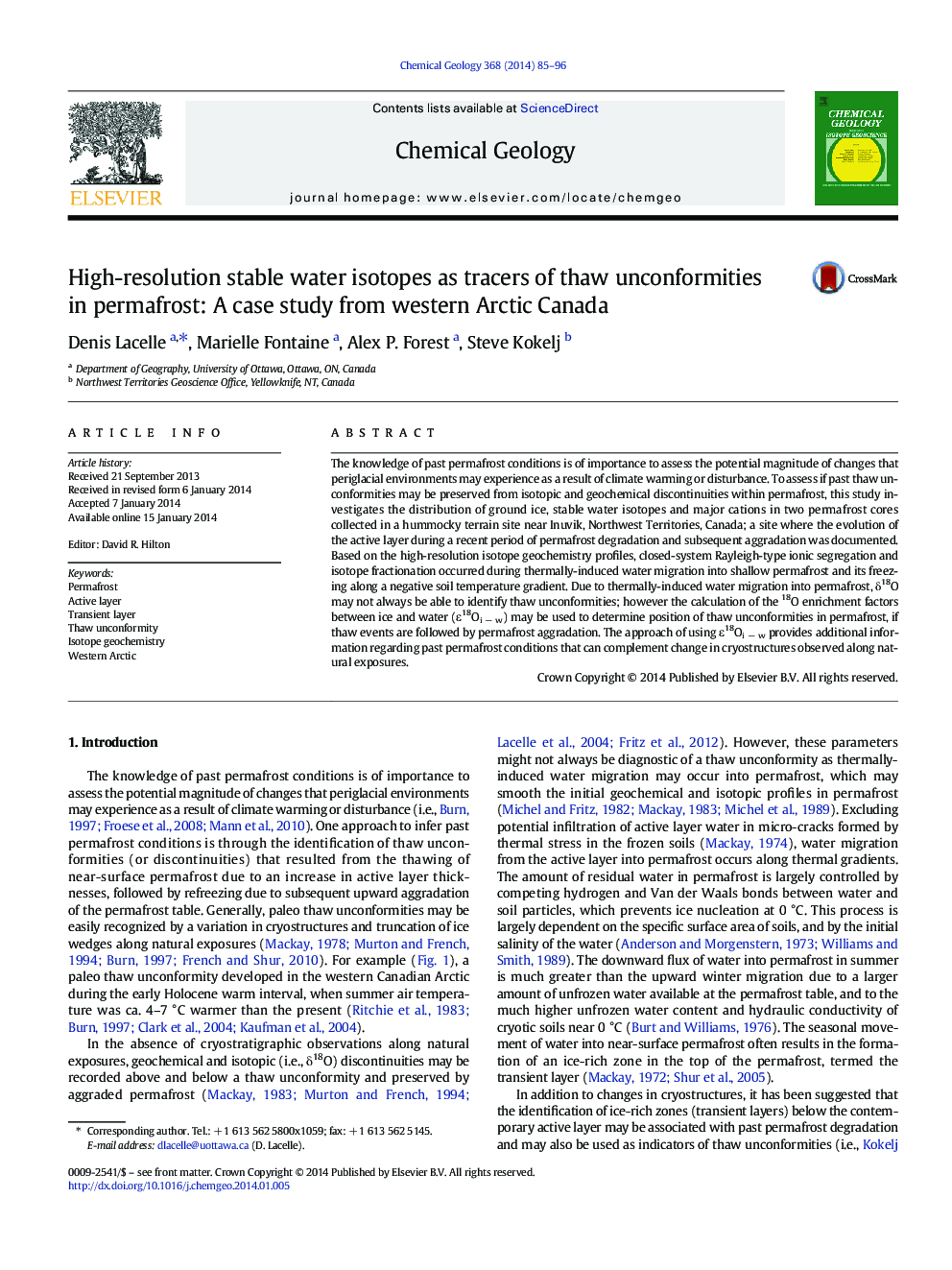| Article ID | Journal | Published Year | Pages | File Type |
|---|---|---|---|---|
| 4698836 | Chemical Geology | 2014 | 12 Pages |
•Solute segregation occurs during thermally-induced water transport into shallow permafrost.•Depth of migration of water along thermally-induced gradient approaches 30–40 cm.•High-resolution δ18O and ε18Oi − w can be used to identify thaw unconformities in permafrost.•Annual variations in the permafrost table are not recorded by high-resolution δ18O analysis.
The knowledge of past permafrost conditions is of importance to assess the potential magnitude of changes that periglacial environments may experience as a result of climate warming or disturbance. To assess if past thaw unconformities may be preserved from isotopic and geochemical discontinuities within permafrost, this study investigates the distribution of ground ice, stable water isotopes and major cations in two permafrost cores collected in a hummocky terrain site near Inuvik, Northwest Territories, Canada; a site where the evolution of the active layer during a recent period of permafrost degradation and subsequent aggradation was documented. Based on the high-resolution isotope geochemistry profiles, closed-system Rayleigh-type ionic segregation and isotope fractionation occurred during thermally-induced water migration into shallow permafrost and its freezing along a negative soil temperature gradient. Due to thermally-induced water migration into permafrost, δ18O may not always be able to identify thaw unconformities; however the calculation of the 18O enrichment factors between ice and water (ε18Oi − w) may be used to determine position of thaw unconformities in permafrost, if thaw events are followed by permafrost aggradation. The approach of using ε18Oi − w provides additional information regarding past permafrost conditions that can complement change in cryostructures observed along natural exposures.
